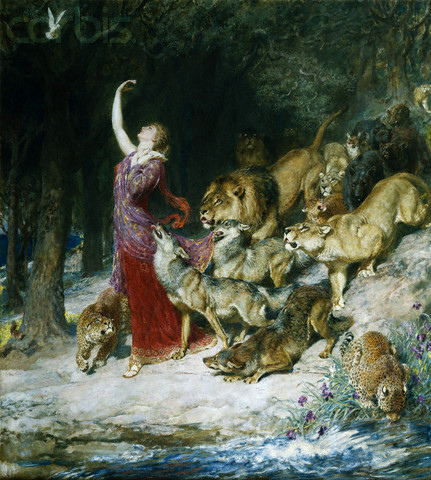Potnia Theron (Ἡ Πότνια Θηρῶν, "Mistress of the Animals") is an ancient title of the Minoan Goddess, an aspect of her power that was assumed by Artemis among others in the Olympian hierarchy that was later introduced in mainland Greece. "In particular, it seems as if an ancient Great Goddess, especially qua Mistress of the Animals, has been individualized in Greece in various ways, as Hera, Artemis, Aphrodite, Demeter, and Athena," Walter Burkert allows, but adds "The idea of a Master or Mistress of the Animals who must be won over to the side of the hunters is widespread and very possibly Paleolithic in origin; in the official religion of the Greeks this survives at little more than the level of folklore." (Burkert 1985, p. 154, 172)
Potnia, meaning mistress, lady, or wife is a feminine form related to potis, a masculine form meaning master, lord, or husband. Potnia was a Mycenaean word inherited by Classical Greek, with the same meaning, which has an exact parallel in Sanskrit patnī.
When Homer mentions a potnia theron (Iliad xxi.470), it is Artemis he means, and the formula appears already tried-and-true. But in the Homeric Hymn to Aphrodite, she is followed across the sacred slopes of Phrygian Mount Ida—ordinarily the haunt of Cybele, the Mountain Mother—by fawning wolves, lions, bears, and panthers. Under her spell they couple in their lairs.
A famous Minoan seal impression unearthed by Sir Arthur Evans shows a nameless goddess brandishing a spear and standing upon a representation of a mountain, flanked by rampant lions in just the same position they occupy in the Lion Gate at Mycenae. Horned altars of the type still to be seen in Cyprus stand behind her, and a son/consort/king/worshipper raises his hands in adoration (illustrated by Joseph Campbell 1964, fig. 12). Whatever Minoans may have actually called her, this is one form of Potnia, the Mistress. A similar Bronze Age goddess was worshipped throughout the Aegean basin and in the Ancient Near East, where the origin of a Mistress of the Animals seems to lie as Cybele. Possible connections with an even earlier, Neolithic Mother Goddess are vague, but tantalizing. An early Naqada Culture (4400-3000 BCE) painting from Egypt also shows a figure flanked by two rampant lionesses.
Not every aspect of the Mistress can be identified with Potnia theron or with the Olympian descendants of this aspect of the Goddess, Artemis and others. Among the Mycenaean tablets inscribed in Linear B at Pylos, John Chadwick identified one bearing the phrase a-ta-na-po-ti-ni-ja: "No Greek scholar could read the first word without dividing it Athana potnia 'Mistress Athena,' almost echoing the Homeric form: potni(a) Athenaie," he wrote (Chadwick 1976). In the Mycenaean tablets at Pylos, potnia is almost always accompanied by an epithet, characterizing a particular place or function of the Mistress. Chadwick, Karl Kerenyi and others assert that these Potniai were associated by the classical Greeks with Demeter and her daughter Persephone, who became the queen of Hades. At Pylos, tablets identify the "Two Queens and Poseidon" and the "Two Queens and the King" (Campbell 1964), with "Poseidon" (archaic Potidaon) an apt cognate of potis (see above).
The goddess identified simply as Orthia in inscriptions at her sanctuary near Sparta (illustration) was conflated with Artemis under the influence of Olympian culture, as Artemis Orthia. The cult image at her shrine was an ancient wooden image, a xoanon.
